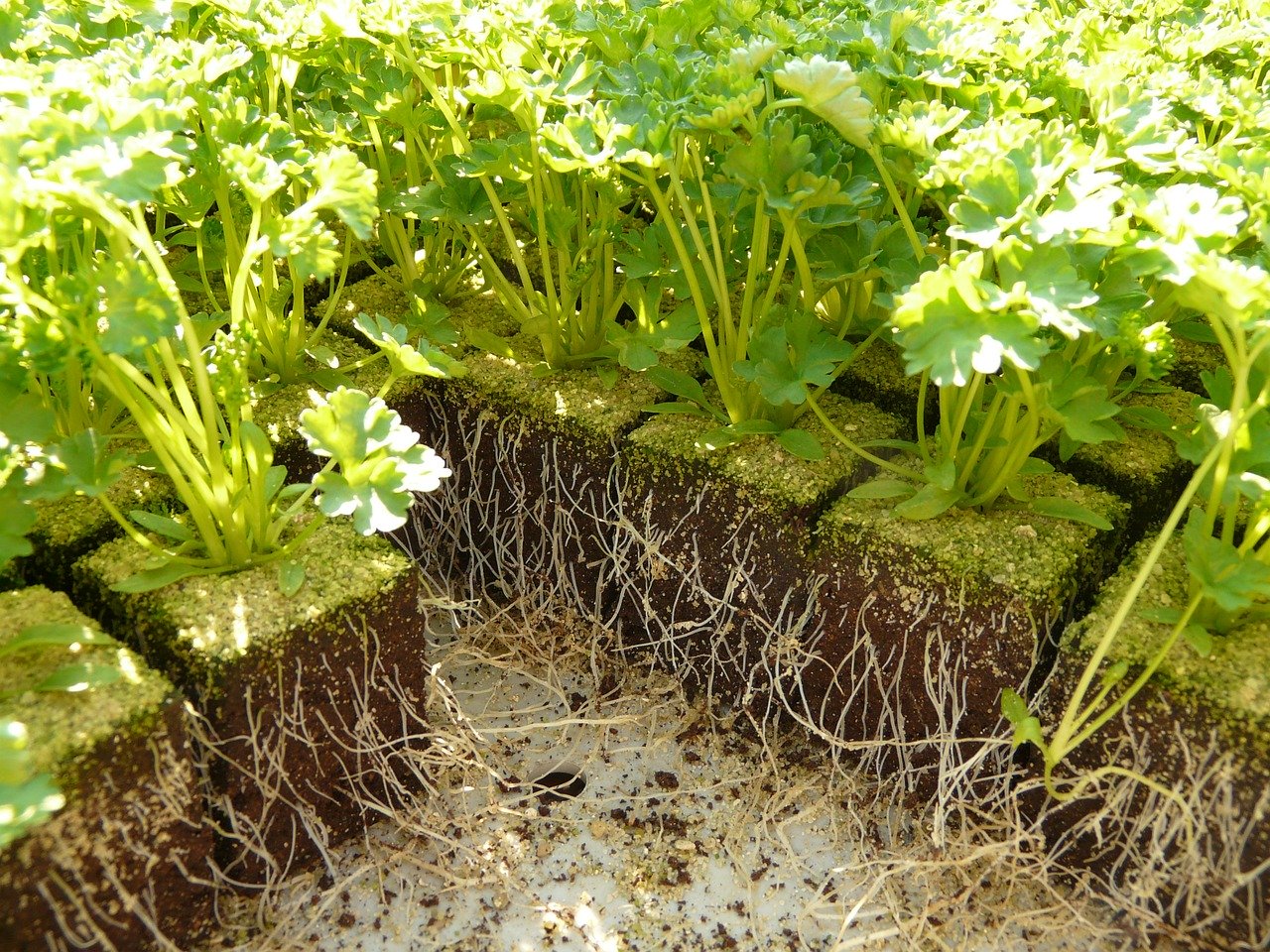 Plant Biology
Plant Biology
The yin and yang of lateral roots
Plants need gravity as a constant landmark for shoots to grow upward and roots downward. We have identified a novel mechanism allowing plants to partially defy the influence of gravity on the lateral roots allowing them to spread horizontally. In the future this will enable us to engineer the root system for specific needs of breeders and farmers.

We worldwide face an increasing frequency of heat waves and drought. As a result, soil in the fields becomes drier, which reduces agricultural productivity. Therefore, it is important to better understand how the roots system of plants can be adapted to drier environments. We can achieve this by minimizing plants water loss and optimizing their water uptake. Roots have a vital role in extracting water from the soil and transporting it to the shoots of plants. A healthy 30-meter tall tree can take 42,000 litres of water from the soil in a single growing season. That is the volume of 300 bathtubs for a single tree only.
The root system of plants is built from the so-called primary root and lateral roots. While the main root usually grows downwards, lateral roots seem to partially defy gravity. They grow away from the main root, branching further and further into the surrounding soil. The architecture of the root system directly influences how well plants take up water and nutrients from the surrounding soil. Therefore, engineering the root system's architecture could improve crop performance under drier and warmer conditions.
Like humans and animals, plants use hormones as signal molecules to control growth and development. The hormone auxin (from the Greek word "auxein" which means "to grow") plays an important role in controlling how roots respond to gravity. Specialized cells in the very tip of the root contain small starch-filled balls, which sediment and allow sensing gravity. The position of the starch balls influences how the hormone auxin is distributed within the root tip, and, hence, the direction of root growth. Soon after plants have formed a primary root, horizontal lateral roots start to emerge from the primary root. Due to gravity, roots would normally bend downwards. However, this response is blocked in lateral roots, allowing the plants to expand more sideways in the soil. In our work, we set out to understand how lateral roots block downward bending.
To find factors responsible for this blocking we analysed the angular growth of lateral roots in 210 Arabidopsis thaliana (thale cress) plants. We used a test called genome-wide association study - we compared our root angle with small, single letter changes in the DNA code of the plants. We discovered a strong association between the angle of the lateral roots and a gene that is involved in regulation of the levels of another plant hormone called cytokinin.
We found that cytokinins cause lateral roots to grow more horizontal, forming a more side-spread root system. Using sensors that bind the hormones and emit light, we visualized the regions where each of them acts in lateral roots. While the hormone auxin accumulates at the lower side of lateral roots, cytokinins accumulate at the upper root flank of lateral roots. Each hormone interferes with growth differently - in analogy to the Chinese yin and yang philosophy, they balance each other out, ultimately blocking root's bending to gravity. According to this mechanism, an auxin- and cytokinin-dependent developmental program decides whether the root system grows mainly parallel to the surface or deeply penetrates the soil.
We anticipate that altering the balance between auxin and cytokinin in the lateral roots could enable us to engineer the root system's depth and width. A decrease in cytokinin levels in lateral roots could induce deeper root systems while increased cytokinin could make it wider. Crops with a steeper and deeper root system could withstand droughts by penetrating further into water-rich layers. On the other hand, in regions with more frequent rainfalls or irrigation systems, crops with a wider, sideways-expanded root system could absorb more water beneath the surface from a larger area.
Original Article:
Waidmann S, Ruiz Rosquete M, Schöller M et al. Cytokinin functions as an asymmetric and anti-gravitropic signal in lateral roots. Nat Commun. 2019;10(1).Edited by:
Dr. Beata Kusmider , Managing Editor
We thought you might like
One root for every soil: a double-personality tale
Sep 12, 2017 in Plant Biology | 3 min read by Laura LorenzoBuilding a community: Plants can choose their root’s neighbours
May 28, 2020 in Plant Biology | 3.5 min read by Ayala SelaHow roots help us fight against hard soils
Oct 8, 2021 in Plant Biology | 3 min read by Bipin K. Pandey , Malcolm J. BennettMore from Plant Biology
Unravelling the Secrets of Pine Roots: A Tale of Nutrition and Adaptation
Oct 20, 2023 in Plant Biology | 3.5 min read by Rafael Cañas , Francisco OrtigosaStressful memories help plants resist caterpillars
Oct 2, 2023 in Plant Biology | 3.5 min read by Samuel Wilkinson , Adam Hannan Parker , Jurriaan TonDecoding the genome of a jackfruit that grows all year round
Sep 6, 2023 in Plant Biology | 3.5 min read by Tofazzal IslamLife after logging: the tale of recovering tropical forests
Aug 21, 2023 in Plant Biology | 3.5 min read by Maria Mills , Terhi RiuttaEditor's picks
Trending now
Popular topics


